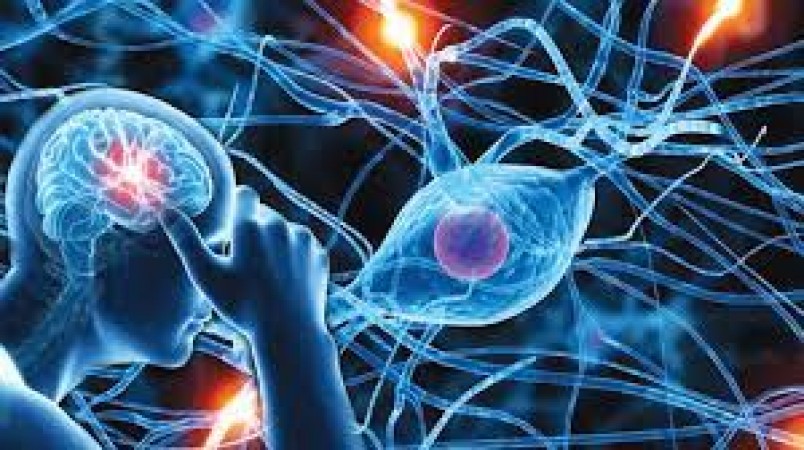
Neurological problems, once primarily associated with the aging population, are now increasingly affecting younger individuals. This shift in demographics has sparked concern among healthcare professionals and researchers alike. As the prevalence of neurological disorders rises among the youth, so does the risk of developing potentially fatal conditions. Understanding the factors contributing to this trend and implementing strategies to address it are paramount in safeguarding the health and well-being of future generations.
In recent years, there has been a noticeable surge in neurological problems among young people. This trend is reflected in epidemiological data, which shows a significant increase in the incidence of various neurological disorders within this demographic. Conditions such as migraine headaches, epilepsy, and attention deficit hyperactivity disorder (ADHD) are becoming increasingly prevalent among youth populations worldwide.
Statistics from various sources corroborate the upward trajectory of neurological disorders among the youth. According to the World Health Organization (WHO), neurological disorders are the leading cause of disability globally, affecting millions of individuals across all age groups. Alarmingly, the burden of these disorders is disproportionately borne by young people, with a growing number of cases reported each year.
The escalating prevalence of neurological disorders among youth underscores the urgent need for heightened awareness and proactive intervention. These conditions, which encompass a broad spectrum of disorders ranging from mild to severe, can have profound implications for individuals' quality of life and overall well-being.
Neurological disorders encompass a wide range of conditions affecting the brain, spinal cord, and nerves. From neurodevelopmental disorders such as autism spectrum disorder (ASD) to degenerative diseases like Parkinson's and Alzheimer's, the scope of neurological problems is vast and multifaceted. Each condition presents its unique challenges in terms of diagnosis, treatment, and management.
The complexity of neurological disorders stems from their intricate underlying mechanisms and diverse clinical presentations. Many of these conditions are chronic and progressive, requiring long-term care and support. Moreover, comorbidities and complications often accompany neurological disorders, further complicating their management and exacerbating their impact on individuals' lives.
Several factors contribute to the rise in neurological disorders among young people, including genetic predisposition, environmental influences, and lifestyle factors.
Unhealthy lifestyle habits, such as sedentary behavior, poor dietary choices, and inadequate sleep, can significantly increase the risk of developing neurological problems. Research suggests that diets high in processed foods and sugar, coupled with low levels of physical activity, may contribute to the onset and progression of conditions like migraine, depression, and anxiety among youth.
The pervasive use of digital devices and screen-based activities has emerged as a prominent risk factor for neurological disorders among young people. Excessive screen time not only displaces physical activity but also exposes individuals to potential harm from blue light emission and electromagnetic radiation. Furthermore, prolonged engagement with screens can disrupt sleep patterns, exacerbate mental health issues, and contribute to the development of attention and cognitive problems in susceptible individuals.
Neurological disorders can have far-reaching consequences for the lives of young individuals, affecting their academic performance, social relationships, and overall quality of life.
The symptoms associated with neurological disorders can significantly impair individuals' ability to function in daily life. For students, cognitive difficulties, memory problems, and attention deficits can hamper academic achievement and hinder learning progress. Likewise, motor impairments, sensory disturbances, and chronic pain can limit participation in extracurricular activities and diminish overall well-being.
Beyond the physical challenges, the emotional toll of living with a neurological disorder can be immense for young people. Feelings of isolation, frustration, and low self-esteem are common among individuals grappling with the challenges of their condition. Moreover, the stigma associated with neurological disorders can exacerbate feelings of shame and inadequacy, further compromising mental health and social integration.
Addressing the escalating prevalence of neurological disorders among youth requires a comprehensive and coordinated approach involving healthcare providers, policymakers, educators, and the broader community.
Raising awareness about the signs, symptoms, and risk factors of neurological disorders is paramount for early detection and intervention. Public health campaigns, school-based initiatives, and community outreach programs can play a pivotal role in disseminating information and promoting understanding about these conditions. By empowering individuals with knowledge and resources, we can facilitate timely access to care and support for those affected by neurological disorders.
Encouraging healthy lifestyle choices is essential for preventing and managing neurological disorders among young people. Schools, families, and healthcare providers can collaborate to promote physical activity, nutritious eating habits, and adequate sleep hygiene. By fostering a supportive environment that prioritizes health and well-being, we can mitigate the risk factors associated with neurological disorders and promote optimal brain health across the lifespan. In conclusion, the rising incidence of neurological disorders among youth is a cause for concern that demands collective action and advocacy. By prioritizing education, awareness, and healthy living, we can work towards stemming this alarming trend and safeguarding the well-being of future generations. Through collaborative efforts and sustained commitment, we can empower young people to thrive despite the challenges posed by neurological disorders, ensuring that they have the opportunity to lead fulfilling and productive lives.
Bollywood Singer Anuradha Paudwal Joins BJP Ahead of Elections
Glamour Galore: Kriti Sanon and Shanaya Kapoor Shine at Lakme Fashion Week Day 3
Sara Ali Khan's Stunning Saree Look Goes Viral - The Price Will Surprise You